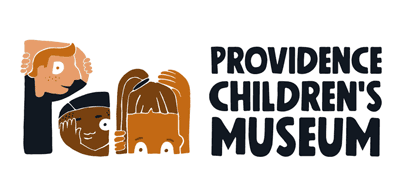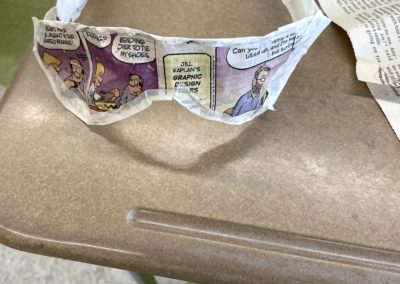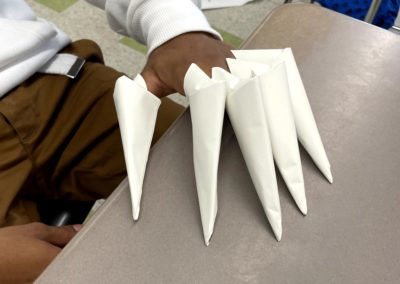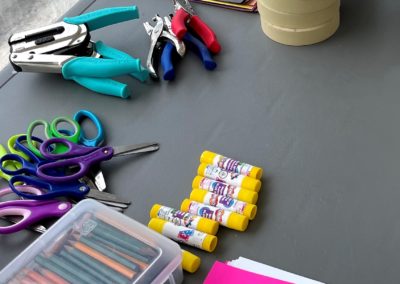From Materials to Goods
Developed by Abbey Kaknes, PCM Play Intensive 2021
(FOCUS: Civics & Culture, K-2, History & Humanities, Creativity & Making, Design Thinking (An innovative problem-solving process))
Where do the materials we use to make goods or products come from? How are they made? What is the process?
The materials we use to make goods come from resources in our world and in our community. Some materials come from plants, animals, the earth. We use the resources in our community to make materials to make goods or commodities to buy and sell in markets.
Today, you will use paper to make a material. You can decide what kind of material you need and how you will make the material. You might use “tape” to make a sturdy or firm material or you might rip paper into strips to create a string like material. You decide what kind of material you need.
Use a good or product you would like to produce as inspiration. What kind of material do you need to make that product? How can you transform paper into a usable material?
Today we will read the book From Sheep to Sweater. We learn about the process of making wool, the material used in used to make sweaters.
What it is? Materials are the stuff that our products are made of.
Why it matters? We need materials to make goods to buy and sell goods. People have wants and needs. People make decisions about what to buy and sell.
Materials
• Construction paper (all sizes and colors)
• Tape
• From Sheep to Sweater Book
• Sheep to Sweater Slides
Set Up
Place bins of paper and tape in center of tables for students to work from.
Student’s Job
Make a material to be used to make a good or a product.
Use a good or product you would like to produce as inspiration. What kind of material do you need to make that product? How can you transform paper into a usable material?
What material can you make out of paper?
How can this material be used to make a good or product to sell in a market?
- Listen to, participate in Read Aloud of From Sheep to Sweater
- Decide on a material needed to make a good or product
- Use paper and/or tape to make the material
Further Challenges:
Using the material, you made, what product or good can you make?
How might you sell this product in a market?
Teacher’s Job
Standards Alignment
COMMON CORE STATE STANDARDS.ELA-LITERACY.READING: INFORMATIONAL TEXT.1.2
Identify the main topic and retell key details of a text.
COMMON CORE STATE STANDARDS.ELA-LITERACY.READING: INFORMATIONAL TEXT.1.3
Describe the connection between two individuals, events, ideas, or pieces of information in a text.
COMMON CORE STATE STANDARDS.ELA-LITERACY.LANGUAGE.1.6
Use words and phrases acquired through conversations, reading and being read to, and responding to texts, including using frequently occurring conjunctions to signal simple relationships (e.g., because).
SOCIAL STUDIES: ECONOMICS E1 (K-2)-1
Students demonstrate an understanding of basic economic concepts by explaining how the availability of resources affects production of goods and offering of services and their consumption.
Connections to Previous Work?
Resources in our Community
Big Ideas:
- Places have different resources
- People make choices as consumers
- People make exchanges to obtain the goods and services they want and need.
- Many jobs that people have are connected to the resources in a community
Prepare/ Background Info
Read Aloud From Sheep to Sweater
Provide opportunities for accountable talk: Where to materials come from? How are they made?
Facilitate creative process of creating a material.
Use prompting questions to facilitate curiosity- What words are used to describe materials?
Extend/ Take it Further
Use the paper made material to make a product
Make multiple products, with variations
Create a stall to sell
Facilitation Strategies
Facilitate a whole class discussion using the guiding questions from the introduction: Where do the materials we use to make goods or products come from? How are they made? What is the process?
Facilitate distribution of supplies.
Scaffolding student thinking through individual conferring and questioning with students. Prompts to support this language:
- What type of material do you need?
- Describe the purpose of the material?
- Can you use your senses to describe the material you need?
Record student thinking/observations as formative assessment.
Probing questions to consider:
- What can you do with paper to make a material?
- Do you need a soft or hard material?
- How might you make a soft material, skinny, study, wide, flexible?
Play to Notice
Experiential: How are students learning from their environment, interacting with the material?
Dynamic: How are students building/revising/inventing their ideas?
Physical: How does movement/creating help students think through problems?
Social: How are students interacting with their peers?
Content Matter to Notice
Economy/Markets: What do people want? What do people need? What choices do people make when they buy something? How do resources influence a market? How do resources shape the community?
SEL to Notice
- Problem-solving
- Risk-taking
- Revision, what can you do if it doesn’t work?
- Positive reinforcement to support confidence to persevere, take risks.




0 Comments